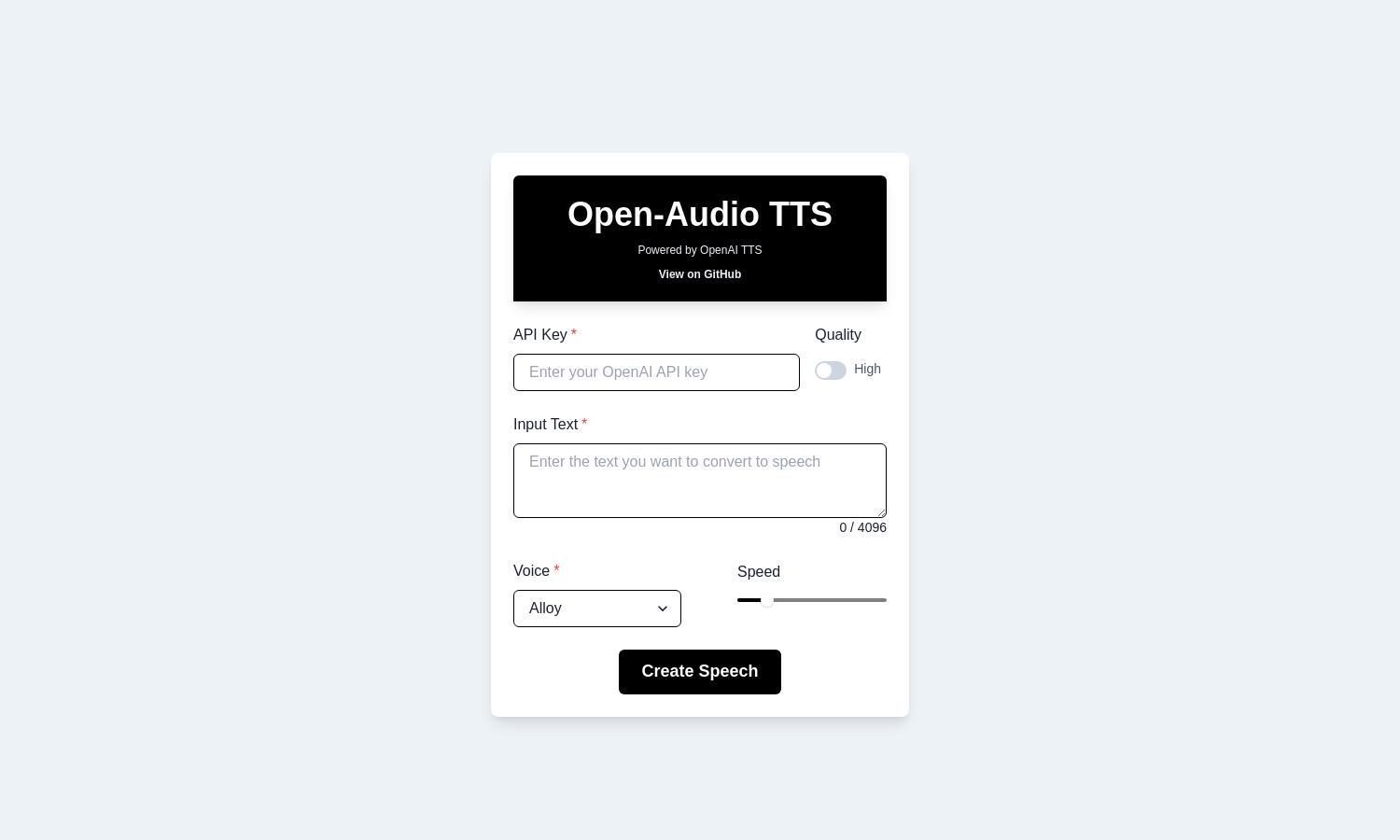Open-Audio

About Open-Audio
Open-Audio TTS offers an innovative solution for converting written text into natural-sounding speech, making content accessible to everyone. Users can easily navigate the platform, adjust settings, and generate audio outputs tailored to their preferences. This powerful tool is ideal for various applications, enhancing communication and learning.
Open-Audio TTS provides flexible pricing plans for users at different levels, including free access for those who want to try out basic features. Upgrading to a premium plan unlocks advanced functionalities and enhancements, making it a valuable investment for users seeking versatile Text-to-Speech solutions.
The user interface of Open-Audio TTS is designed to facilitate seamless navigation, ensuring a smooth experience for users. The layout emphasizes accessibility, offering intuitive controls that enhance user engagement. Unique features within Open-Audio TTS further streamline the audio generation process, making it an effective choice for all.
How Open-Audio works
To begin using Open-Audio TTS, users first create an account, allowing them to access the platform's features. After onboarding, users can simply input or upload their text, select desired voice settings, and generate audio effortlessly. The platform ensures quick processing and allows users to review and download their audio files for various uses.
Key Features for Open-Audio
Natural-Sounding Voice Generation
Open-Audio TTS excels in delivering high-quality, natural-sounding voice generation, setting it apart from competitors. This unique feature makes the platform ideal for content creators, educators, and accessibility advocates looking for realistic audio representations of written content. Users appreciate the realism and clarity of the generated speech.
Customizable Voice Options
With Open-Audio TTS, users can choose from a variety of customizable voice options, tailoring audio output to suit their preferences. This flexibility enhances user experience, as individuals can select voices that resonate with their intended audience or brand identity, making communication more effective and engaging.
User-Friendly Interface
Open-Audio TTS boasts a user-friendly interface that simplifies the text-to-speech process. With straightforward navigation, users can quickly access necessary tools and settings, ensuring that even those new to audio generation can utilize the platform effectively. This design promotes an efficient workflow for all users.
You may also like:








